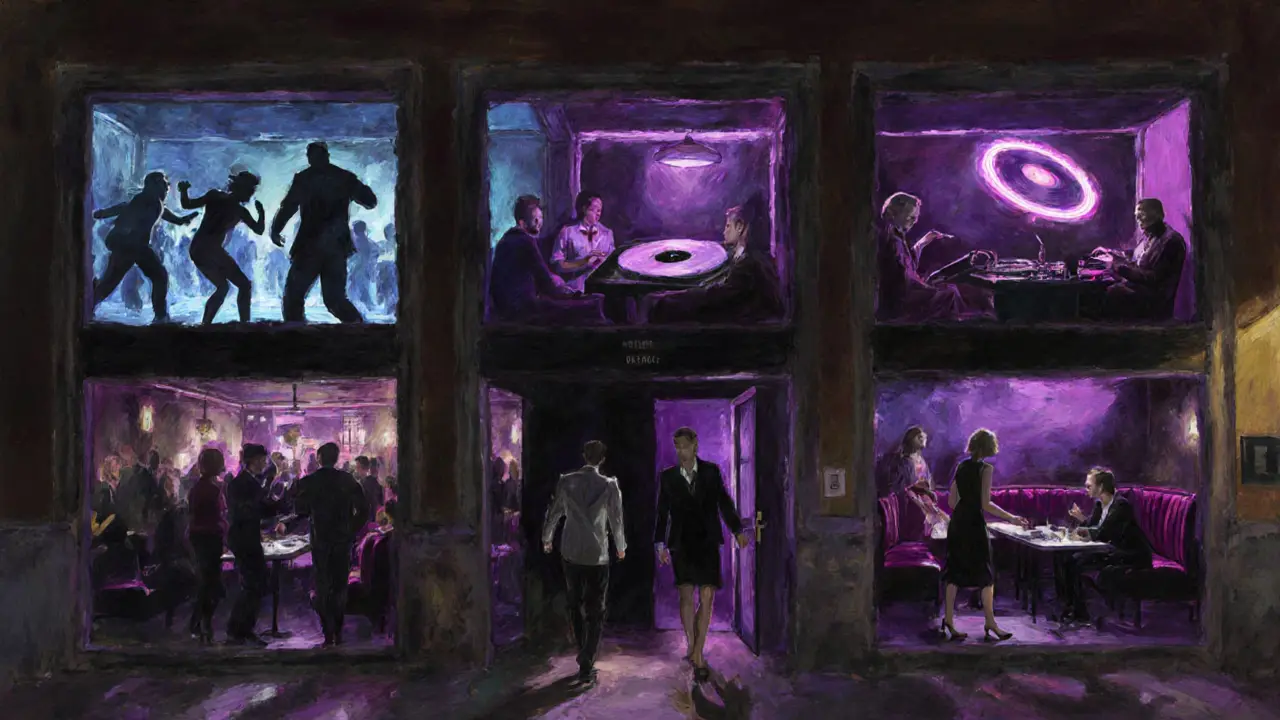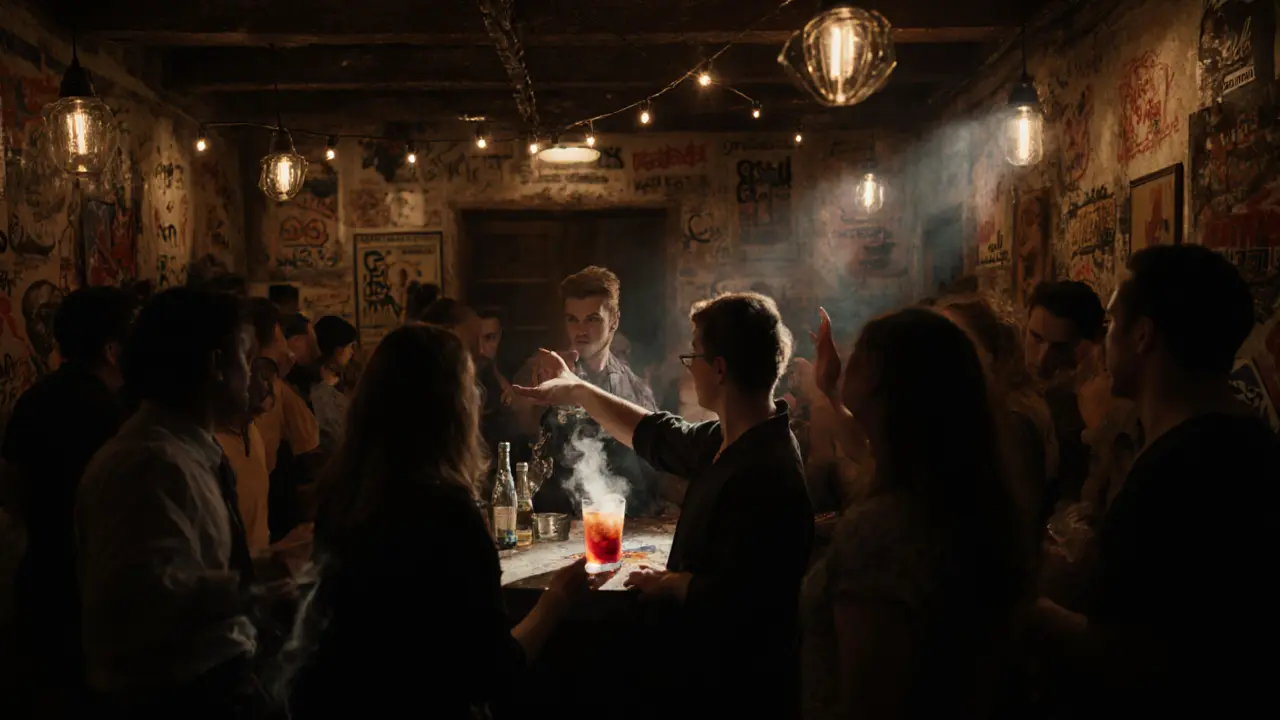Milan Nightlife - The Ultimate Party Guide

When the sun sets in Milan, the city doesn’t sleep - it switches modes.
Forget what you think you know about Italian nightlife. Milan isn’t just about fashion shows and espresso bars. By 10 p.m., the streets around Brera and Navigli fill with people in sharp coats, designer sneakers, and confident smiles. This isn’t a tourist trap. This is where locals go to unwind, dance until dawn, and see who’s next in line to be the face of next season’s campaign.
Where the real party starts - Navigli
Start your night in Navigli. This canal-side district used to be a quiet neighborhood of artists and antique dealers. Now, it’s the heartbeat of Milan’s after-dark scene. Over 50 bars line the water, each with its own vibe. Some are cozy wine spots with live jazz. Others turn into full-on clubs by midnight.
Try Bar Basso - it’s not flashy, but it’s where the aperitivo culture was born. Order a Negroni Sbagliato, sit on the terrace, and watch the city come alive. By 11 p.m., the crowd shifts from professionals in blazers to young creatives in streetwear. The music changes too - from Italian pop to deep house.
Brera: Where style meets substance
If Navigli is the soul of Milan nightlife, Brera is its mirror. This neighborhood is all about aesthetics. The clubs here don’t need neon signs. They rely on mood lighting, velvet booths, and curated playlists. Entry isn’t about who you know - it’s about how you look.
Head to Magazzini Generali on weekends. It’s a converted warehouse with three floors, each playing a different genre. Floor one: techno. Floor two: indie dance. Floor three: live sets from rising Italian DJs. No cover charge before midnight. After that? Expect a line. Dress well. No hoodies. No sneakers with socks. This isn’t a rule - it’s the energy.
Porta Venezia: The underground heartbeat
Not every club in Milan needs a bouncer in a suit. In Porta Venezia, the party lives in hidden basements and unmarked doors. This is where experimental music thrives. You’ll find queer-friendly spaces, vinyl-only DJs, and parties that start at 2 a.m. and end at sunrise.
La Bussola is a local legend. It’s tiny, no sign, and you need a friend to get in. But once you’re inside, you’ll hear tracks you’ve never heard before - Italian disco remixes, Berlin techno edits, African beats fused with electronic. The crowd? Mix of artists, students, and expats who’ve been coming here for years. Don’t expect a drink menu. Just point. They’ll know what you want.

Centro Storico: Luxury and loud
For those who want the glamour, head to the heart of the city. Around Piazza San Babila and Via Montenapoleone, you’ll find the big-name clubs that make headlines. These aren’t just places to dance - they’re experiences. Think VIP tables with champagne towers, bottle service, and photographers snapping pics of the crowd.
Le Jardin is the place if you want to see Milan’s elite. It’s open only on weekends, and the dress code is strict: no casual wear. Men wear tailored jackets. Women wear heels and silk. The music? High-energy pop remixes and global hits. It’s not for everyone - but if you’re looking to be seen, this is where it happens.
When to go - timing matters
Milan doesn’t party like London or Berlin. The rhythm is different. Dinner ends at 10 p.m. Aperitivo runs from 6 to 9. The real nightlife kicks off at 11 p.m. and peaks between 1 a.m. and 3 a.m. Most clubs close at 5 a.m. - some even stay open until 7.
Weekdays? Quiet. Fridays and Saturdays are packed. But here’s the secret: Thursday nights are the best-kept secret. The crowd is younger, the prices are lower, and the energy is raw. Many locals skip Friday to rest. So Thursday is when the real insiders go.
What to wear - it’s not optional
In Milan, your outfit is your resume. You don’t need to wear Gucci to get in, but you do need to look intentional. Men: dark jeans, clean sneakers, a fitted shirt or slim jacket. Women: a little black dress, statement earrings, heels or stylish boots. Avoid sportswear, baseball caps, and flip-flops - they’re instant rejection.
Local rule: If you look like you just rolled out of bed, you won’t get past the door. But if you look like you’ve spent 20 minutes picking your look? You’re in.
How to get around - no cars, no stress
Driving in Milan at night? Don’t. Parking is expensive, and the city center is a no-go zone for non-residents after 7 p.m. Use the metro. Lines M1 and M3 connect the main nightlife zones: Navigli, Brera, Porta Venezia, and Centro Storico.
Taxis are easy to find, but Uber doesn’t work here. Use Free Now or Beat - local apps with better coverage. If you’re staying late, book a ride ahead. Around 3 a.m., wait times can hit 20 minutes.

What to drink - beyond the Negroni
The aperitivo is sacred. For €10-15, you get a drink and a buffet of snacks - think mini sandwiches, arancini, olives, and salads. It’s not a happy hour. It’s a ritual.
Try a Spritz (Aperol or Campari), a Bellini, or a local favorite: the Strega Sour - made with Strega liqueur, lemon, and soda. In clubs, cocktails start at €12. Beer? €8 for a bottle. Wine by the glass? €7. Skip the vodka shots. No one here does them.
Is it safe?
Milan’s nightlife is one of the safest in Europe. Violent crime is rare. But petty theft happens. Keep your phone and wallet tucked away. Don’t flash cash. Stick to well-lit streets. Avoid isolated alleys after 2 a.m.
Most clubs have security. They’re not there to be harsh - they’re there to keep the vibe right. If you’re respectful, you’ll be fine.
What to do after the party
When the music stops, the night doesn’t have to end. Head to Bar Camparino in Galleria Vittorio Emanuele II. It opens at 6 a.m. and serves espresso and brioche. The light is golden. The city is quiet. You’ll be surrounded by people who’ve been out all night - artists, chefs, designers, and travelers.
Or grab a panzerotti from Panzerotti Milano on Via Torino. Crispy, hot, filled with cheese and tomato. It’s the perfect cure for a late-night buzz.
Final tip - be present
Milan nightlife isn’t about checking off clubs. It’s about the people, the music, the way the lights reflect off the canals, the laughter that spills out of hidden doorways. Don’t rush. Stay a little longer. Talk to someone new. Let the city surprise you.
What’s the best night to go out in Milan?
Thursday and Saturday are the best. Thursday has a younger, more authentic crowd with lower prices. Saturday is the peak - packed, loud, and glamorous. Avoid Sunday - most clubs are closed or quiet.
Do I need to book tables in advance?
For big clubs like Le Jardin or Magazzini Generali on weekends, yes. Book at least 24 hours ahead through their websites or Instagram DMs. For smaller bars in Navigli or Porta Venezia, no - just show up.
Is Milan nightlife expensive?
It can be. Aperitivo costs €10-15. Cocktails in clubs are €12-18. Beer is €8. VIP tables start at €200. But you can have a great night for under €50 if you stick to local bars, skip the bottle service, and enjoy the aperitivo spread.
Can I go out alone in Milan?
Absolutely. Milan is very solo-traveler friendly. Many bars have communal tables. DJs often chat with guests. You’ll meet people easily if you’re open. Just stay aware of your surroundings - especially after 3 a.m.
Are there any age restrictions?
Most clubs require ID. The legal drinking age is 18. Some venues, especially upscale ones, may enforce a 21+ policy. Always carry a passport or EU ID card - Italian bouncers check carefully.
What’s the music like in Milan clubs?
It varies by neighborhood. Navigli leans into indie and electronic. Brera has deep house and disco revival. Porta Venezia is experimental - think techno, ambient, and global beats. Centro Storico plays chart-topping pop and remixes. There’s something for every taste.
Is there a dress code for all Milan clubs?
Not all - but most high-end and popular clubs do. Casual wear like hoodies, shorts, or flip-flops won’t get you in. Think smart-casual: dark jeans, clean shoes, a nice top or jacket. When in doubt, dress a little sharper than you think you need to.
What time do clubs close in Milan?
Most close at 5 a.m. Some, like La Bussola or underground spots, stay open until 7 a.m. on weekends. The metro runs until midnight, but night buses (N lines) operate until 5:30 a.m. to get you home.
